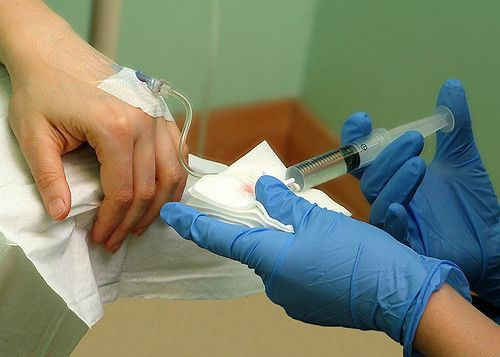Chemotherapy Drugs In Single-Dose Vials Result In Lots Of Waste, Costing Americans $3 Billion

Doctors approve a single-dose vial for one patient who needs a single procedure or injection, explains an infographic from the Centers for Disease Control and Prevention: “Discard after every use!” Certain types of cancer drugs are packaged in single-dose vials, a new study finds, but since dosing is based on body size, the result is leftover discarded drugs — to the tune of nearly $3 billion each year in the United States.
Most drugs come in single-dose vials, but typically contain more than needed for one dose, according to Pharmacist Eric S. Kastango. Typically, these vials lack antimicrobial preservatives, so harmful bacteria can grow and infect a patient if the drug is not used immediately once opened. Generally, single-dose ampoules (the tiny containers) must be discarded after opening and not stored for any time period, while vials must be discarded within 1 to 6 hours, depending on the environment.
Contamination could place a patient's health in serious risk.
“Outbreaks from improper use of single-dose/single-use vials have resulted in life-threatening bacterial infections including bloodstream infections, meningitis, and epidural abscesses,” according to the most recent CDC position paper on the subject.
While the government agency recommends single-use vials be used only as intended, it does allow “qualified healthcare personnel” in exceptional circumstances to repackage medications under specific guidelines. In routine situations, though, health care professionals must be throwing out unused portions of single-use vials.
Dr. Peter B. Bach of Memorial Sloan Kettering Cancer Center and his colleagues investigated this everyday practice: Exactly how much medicine was going to waste?
Waste Not
Specifically, Bach and his team examined 20 different infused cancer drugs, each dosed by body size yet sold only in packages of single-dose vials. The researchers projected the total amount of wasted medications during 2016 and then estimated costs of these unused lefovers.
Medicare, private insurers, and patients will pay drug companies around $1.8 billion for discarded cancer drugs during 2016 alone, the researchers estimate. Add to that $1 billion in price markups paid to doctors and hospitals on those same unused medications.
“The proportion of drugs left over varies from 1 percent to 33 percent,” concluded the authors, who added small percentages can lead to large costs.
“Several policy options merit exploration,” wrote Bach and his co-authors, who suggest regulators could require drug manufacturers to provide drugs in a variety of sizes to ensure the amount of wasted drug is low. Alternatively, manufacturers might be permitted to select their own vial sizes, but could be required to refund costs after the “virtual return” of leftover drugs.
Source: Bach PB, Conti RM, Muller RJ, et al. Overspending driven by oversized single dose vials of cancer drugs. BMJ. 2016.



























